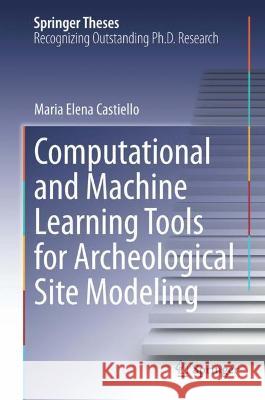Computational and Machine Learning Tools for Archaeological Site Modeling » książka
topmenu
Computational and Machine Learning Tools for Archaeological Site Modeling
ISBN-13: 9783030885663 / Angielski / Twarda / 2022
Computational and Machine Learning Tools for Archaeological Site Modeling
ISBN-13: 9783030885663 / Angielski / Twarda / 2022
cena 925,87
(netto: 881,78 VAT: 5%)
Najniższa cena z 30 dni: 848,19
(netto: 881,78 VAT: 5%)
Najniższa cena z 30 dni: 848,19
Termin realizacji zamówienia:
ok. 22 dni roboczych
Bez gwarancji dostawy przed świętami
ok. 22 dni roboczych
Bez gwarancji dostawy przed świętami
Darmowa dostawa!
This book describes a novel machine-learning based approach to answer some traditional archaeological problems, relating to archaeological site detection and site locational preferences. Institutional data collected from six Swiss regions (Zurich, Aargau, Grisons, Vaud, Geneva and Fribourg) have been analyzed with an original conceptual framework based on the Random Forest algorithm. It is shown how the algorithm can assist in the modelling process in connection with heterogeneous, incomplete archaeological datasets and related cultural heritage information. Moreover, an in-depth review of past and more recent works of quantitative methods for archaeological predictive modelling is provided. The book guides the readers to set up their own protocol for: i) dealing with uncertain data, ii) predicting archaeological site location, iii) establishing environmental features importance, iv) and suggest a model validation procedure. It addresses both academics and professionals in archaeology and cultural heritage management, and offers a source of inspiration for future research directions in the field of digital humanities and computational archaeology.











